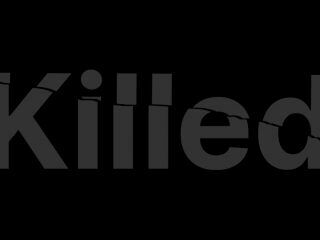Building a marketing strategy is a little bit like building IKEA furniture.
If you’ve done it before, it’s almost easy: you can finish your ALEX bookcase only consulting the instructions a few times. If you’ve done it enough times, you might even be able to DIY customisations not provided by the instructions.
If you’re new, it’ll take you longer. Guidelines are good, but you learn more by doing. Your bookcase might come out a little wobbly, but it’ll serve you until you learn how to do it better.
Now.
Picture building an ALEX bookcase.
You’re used to it.
It’s something you’ve done before.
You know what it’s all about. Every screw, every tool needed, every possible outcome.
Except you’ve borrowed someone else’s tools, you’ve lost half the screws, and your house is on fire.
That was strategy marketing in 2020.
What’s strategy marketing?
How do you talk to your consumers?
Social media, or events? Billboards advertising your products, or try-it-live stalls in supermarkets? Do you write blogs?
Do you Tiktok?
What you do to communicate about your brand is strategy marketing. Strategy marketing takes an overall look at how your business is doing, and plans out the next steps, the next big event, the next investment that will push your business forward. It’s necessary for any organisation to have a strategy on how they’re going to market to their audience. It means knowing who your audience is, knowing what they like to hear, and figuring out the best way to combine those things into what can feed the bottom line.
In 2020, however, strategy marketing had to pivot.
Strategy Marketing changeover: 2020 edition
Most strategy marketing tactics focused on selling.
You have a brand. It sells something – a product, a service, a way of living. A lifestyle. A promise.
To make your brand work, you come up with strategies that sell: buy one, get one; the last vacuum/plate cleaner/showerhead you’ll ever buy; how did you ever do without this airpod case for your earphones? It’s the norm. Consumers won’t buy something they don’t like the look of, won’t see the use of, or don’t understand, so strategies work around those issues with advertising, brand campaigns, and social media.
For selling. It’s important to memorise that most of what happened before 2020 was to sell.
With the pandemic, while more people were shopping online than ever before, brands struggled to connect. We’ve covered this in other blog posts, so we won’t repeat it now (have you read our ebook on it? It’s free!), but the ‘too long, didn’t read’ version is this:
Wages went down.
So sales went down.
So people stopped talking to/about/with brands.
So brands couldn’t reach their audiences.
And brands went into panic mode. Social media accounts which had gone dormant sprang back to posting. Websites due an update debuted their new look with sales. Brands that didn’t have websites made websites.
It worked, for a little while, but the allure of new wore off, and brands were back at square one, wrestling with how to sell to audiences that don’t want to buy.
What changed?
Strategies pre-2020 focused around selling.
Strategies post-2020 should focus around talking.
It’s a subtle shift. Barely noticeable unless you’re looking for it, and we were curious, so we looked for it. The biggest difference between 2020 and 2021 is that the central focus for why you needed a strategy changed from selling to conversation, from audience-as-consumers to consumers-as-audience.
That changed what came after. Brands didn’t push prices, cheaper options, ‘try this or you’ll regret it’ products.
Brands pushed help and conversation.
It worked.
Business strategy tips for 2021
A strategy is only as good as long as you’re willing to work on it.
It’s not static. It can’t be moved from year to year and maintain the same strength. For a strategy to be effective, it has to be alive, a part of your business that changes as you do, adapts as you do. With the ongoing pandemic to reckon with and the fluidity of consumer behaviour an even greater concern than before, you need to make sure that your strategy for 2021 is apocalypse-proof.
Here’s a few tips to help.
- Adapt. You’ll have to change your strategy a couple of times until you find what works. The things that work for you, the things that work for your audience, and the things that work for your brand are a Venn diagram built on patience and trying things out.
- Stay ahead of the technology curve. Cookies are ending. Google is updating. Facebook is becoming Instagram is becoming Facebook. To make the most of your strategy, you need to know what’s happening with the platforms you use.
- Build trust, build connection. Your brand will survive if consumers want it to. Don’t be the reason they don’t. Foster connection with your audience first and foremost. Make people the centre of your brand’s purpose for existing.
- Do what you say. Brands all make promises. Sometimes those promises get forgotten about. Not on the internet – not anymore. If you’re going to promise your audience something, hold to it. Donate to that charity. Give a percentage of profit to the community. Help.
- Relax. We know it’s hard. Corporate brands are corporate because it’s safe, and it’s easier than taking a risk that doesn’t pay off – but people respond to casual brands, even if it’s just on a website or a Tiktok. They want to anthropomorphise a brand into someone or something that’s alive. Give them that.
Ultimately, our one tip is this: when you’re looking to create a strategy, you need a centre-point, something that is going to drive your goals. Our suggestion?
Put people at the centre. Put your community at the centre.
The greatest victories come when you understand your opponent and their desires and their wants as well as you know yours. From there, it’s easy to make a plan on how to succeed.
Just ask King Frederick II of Prussia, the reason potatoes are a fundamental staple of European cuisine.




